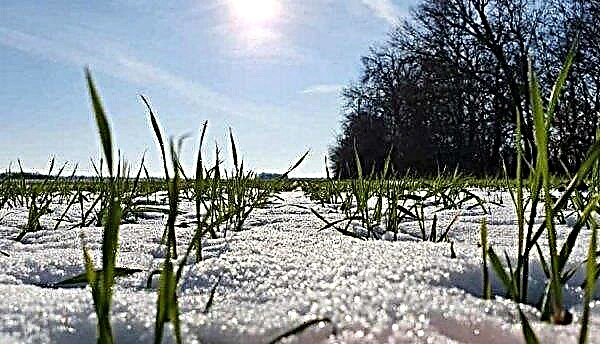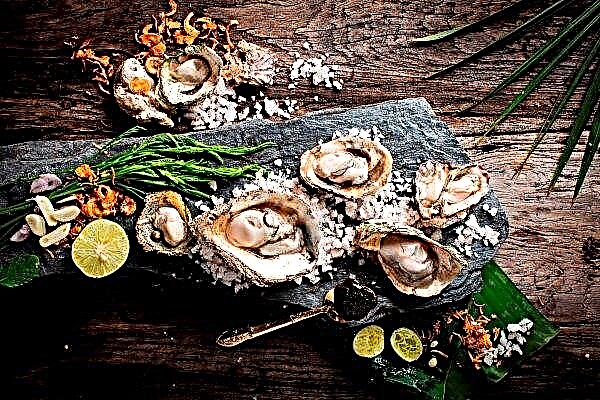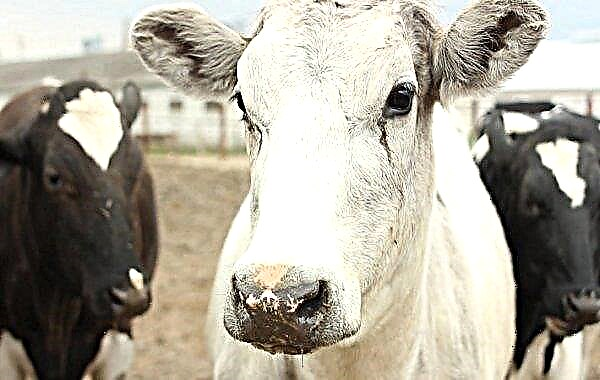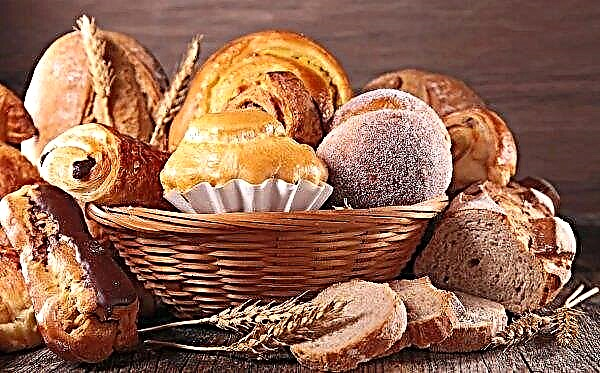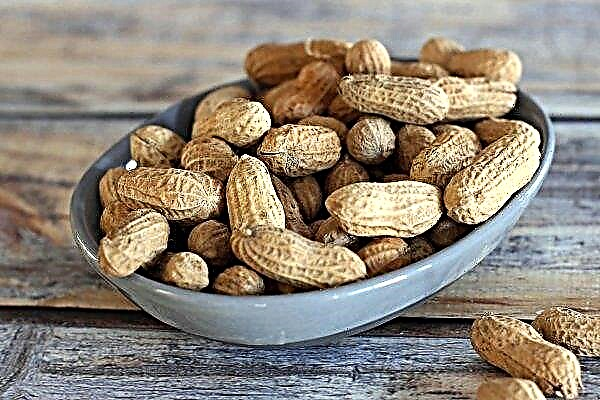In order for hydrangea to grow well, bloom for a long time and have a well-groomed appearance, it, like most ornamental plants, needs to be trimmed. Tips on how to correctly and in what time frame can carry out such pruning are collected in the article.
Is hydrangea trimmed in autumn
Specialists and experienced flower growers advise cutting hydrangea in the spring and autumn. Dividing this process into 2 stages, it is possible to achieve that the plant tolerates it more easily and recovers faster.By cutting ornamental plants in the fall, it is possible to achieve several goals:
- make the appearance of bushes more accurate;
- prevent thickening;
- stimulate the growth of young shoots in the coming year.
Did you know? The Latin name for hydrangea Hydrangeaceae is composed of the words hydor ("water"), angor ("longing"), hortis ("garden"), and in translation means "yearning for water." The title reflects one of the key characteristics of the flower — moisture lovingness.
Depending on the purpose for which the haircut is made, several of its types are distinguished:
- Sanitary. During it, shoots and leaves that are yellowed, dried out, spoil the shape of a bush, are sick or damaged are removed.
- Thinning. It provides for the cutting of weak shoots formed in the current year, those that will no longer give buds, as well as small shoots growing inside the bush.
- Anti-aging. During it, the removal of three- and four-year-old shoots in which there was no flowering is performed.

You should know that autumn pruning is more complicated than spring pruning. The fact is that it must be carried out competently and on time, so that the plant can recover and heal the wounds before the onset of frost. It is also important to be aware of the negative consequences this procedure may lead to: in particular, a decrease in frost resistance and an increased risk of developing diseases and pests.
When to cut hydrangea in the fall
It is necessary to prepare for the procedure for cutting the shoots. First of all, you should study a large amount of professional information on how to correctly implement this.
To determine the timing of the haircut, you need to consider several factors:
- climatic features of the region where hydrangea is grown;
- weather forecast for autumn;
- type and variety of cultivated flower culture.

In the suburbs, the middle lane
In this region, pruning is recommended no later than the beginning of November. If the forecast anticipates low temperatures this month, then it is worth moving the procedure to an earlier period. In the suburbs, haircuts can be done until the weather is warm and the temperature is in the range from +9 to + 15 ° С. After this procedure, the plant needs mandatory shelter.
In the Urals, in Siberia
There is an unwritten rule that deals with pruning hydrangeas. It reads as follows: the north the area, the earlier and more gentle the haircut should be. Thus, in the Ural and Siberian gardens and flower beds, the procedure should be carried out no later than the beginning of October, but it is better to have it done in September. Doing a haircut is not worth it. Hydrangea must have time to recover before the cold comes. Only if the sections are completely healed will she be able to endure the winter without problems.

In the Leningrad region
This region is characterized by hot summers of short duration and early autumn. The procedure for cutting hydrangeas should be started after the leaves begin to fall off. The optimal period for removal of unnecessary organs is the beginning of October. The procedure should be minimal, superficial.
Important! In the autumn, it is unacceptable to trim young shoots. This can provoke problems with the growth and development of decorative culture.
How to trim a beginner
For each type of hydrangea, various pruning schemes are applied. It depends on which shoots blooming buds are formed on. So, 2 types of hydrangeas are distinguished. The first of them includes varieties and varieties, the flowering of which occurs on last year's branches.
These include:
- oak hydrangea;
- serrated;
- large-leaved;
- lianoid.

The second type includes plants in which buds appear on young shoots formed in the current year. They include tree and panicled species.
Panicled
This variety is the most unpretentious in terms of care. She does not need strong pruning. For her, it is enough just to remove dried buds after flowering and annual cleaning with sanitary purposes. During pruning, it is recommended to cut out broken, damaged, dried out shoots. In addition, young shoots are subject to shortening. They are cut, leaving 3-5 kidneys.
Since panicled hydrangea is prone to thickening of the crown and the formation of numerous processes, it is necessary to evaluate which ones overload the bush and truncate them. The removal of last year’s growth is also recommended. When conducting a rejuvenating pruning, several of the strongest young branches are left, which grow outward, and the rest are cut out.

Tree-like
When cutting a tree of hydrangea, it is necessary to take into account such features as slow growth and a long recovery period. For these reasons, pruning should be done early.
Important! When pruning, use only disinfected garden tools. The same devices can not be used to cut different plants without disinfection to exclude the transmission of pathogens.
The cropping scheme is as follows:
- Remove faded inflorescences.
- Cut broken and damaged branches.
- Remove zero shoots that are not able to bloom in the future.
- Shorten last year’s branches by 3-4 kidneys.
- With a rejuvenating haircut, cut old shoots to the maximum.

Large leaf
This variety is the least frost-resistant of all of the above, so you need to cut it sparingly, as there is a big risk that it will not be able to tolerate frosts normally. In general, when pruning large-leaved hydrangea, one must act extremely carefully so as not to harm the plant. Some gardeners prefer not to disturb her at all in the fall, but plan a haircut only for the spring.
It should be remembered that on young shoots, when spring comes, shoots will appear on which blooming buds will form. If you want to rejuvenate the bush, so that the plant normally tolerates such a haircut, the procedure is divided into 3 stages and stretched for 3 autumn. Annually get rid of a third of all shoots.Did you know? You can get bud colors that are not natural for hydrangea by watering them at the stage of dissolving with a solution of aluminum or ammonia alum. As a result, white petals turn blue and pink petals turn purple.

The scheme of sanitary trimming of large-leaved species is as follows:
- Remove leaves and wilted inflorescences from the lower tier.
- Cut off all damaged, diseased, deformed, growing inside crowns, crossed shoots.
Video: trimming large leaf hydrangea
Pruning young hydrangea in the fall
Hydrangea pruning is not performed until it reaches the age of three, as a young plant needs strength and strong immunity in order to successfully withstand adverse winter conditions. In the future, you need to start with a light haircut. Crown formation is started in the spring, and sanitary pruning can be done in the fall.

Thus, pruning a beautiful hydrangea in the fall is a very responsible and difficult procedure. In order for the plant to survive the winter without problems and with new strength to enter the new vegetation period in the spring, the procedure must be carried out competently, competently. A beginner should use the recommendations on the haircut scheme, depending on the variety, as well as regarding the timing in different regions. Knowing the features of pruning different types of decorative culture, you can maintain its beauty, grooming, long flowering, prolong its life.

